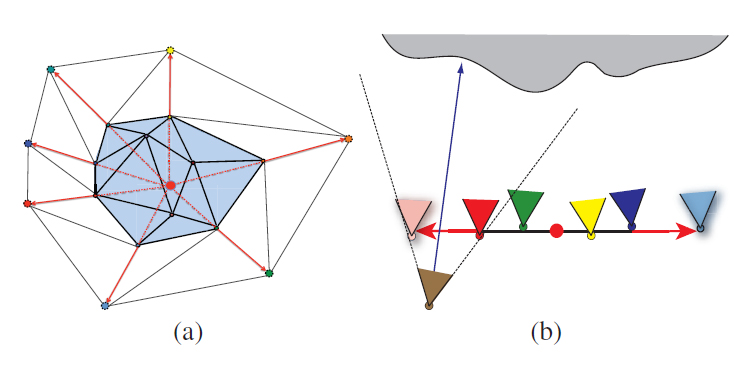Parallax Photography: Creating 3D Cinematic Effects from Stills
Ke Colin Zheng, Alex Colburn, Aseem Agarwala, Maneesh Agrawala, Brian Curless, David Salesin, Michael Cohen
Abstract
We present an approach to convert a small portion of a light field with extracted depth information into a cinematic effect with simulated, smooth camera motion that exhibits a sense of 3D parallax. We develop a taxonomy of the cinematic conventions of these effects, distilled from observations of documentary film footage and organized by the number of subjects of interest in the scene. We present an automatic, content-aware approach to apply these cinematic conventions to an input light field. A face detector identifies subjects of interest. We then optimize for a camera path that conforms to a cinematic convention, maximizes apparent parallax, and avoids missing information in the input. We describe a GPU accelerated, temporally coherent rendering algorithm that allows users to create more complex camera moves interactively, while experimenting with effects such as focal length, depth of field, and selective, depth-based desaturation or brightening.We evaluate and demonstrate our approach on a wide variety of scenes and present a user study that compares our 3D cinematic effects to their 2D counterparts.

(a) The view mesh is extended by creating copies of boundary vertices and placing them radially outward (red arrow) from the centroid (red dot) of all of the mesh vertices. The dotted blue arrow shows a ray projected through the image plane. The blending weights at this pixel correspond to the barycentric coor- dinates of the intersected triangle of viewpoints in the view mesh.